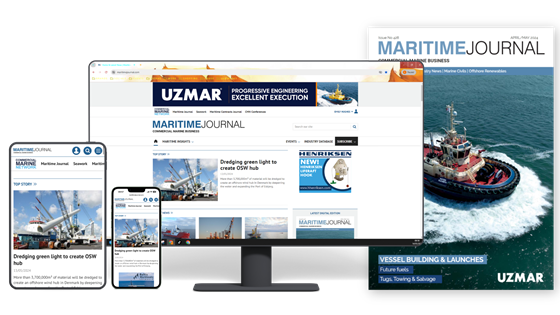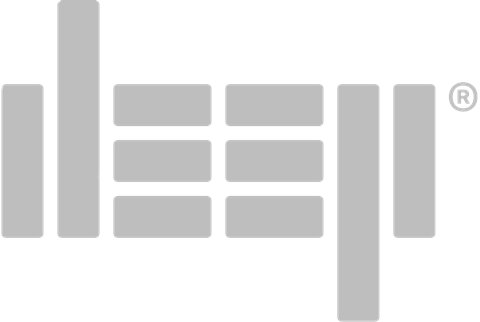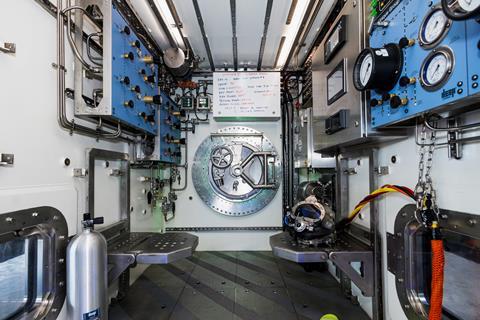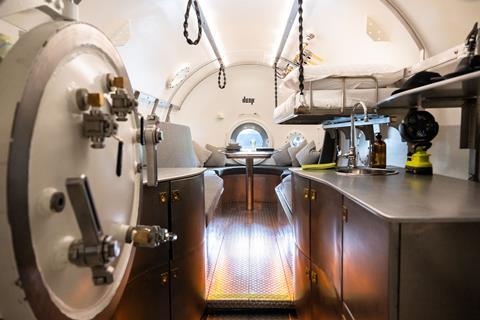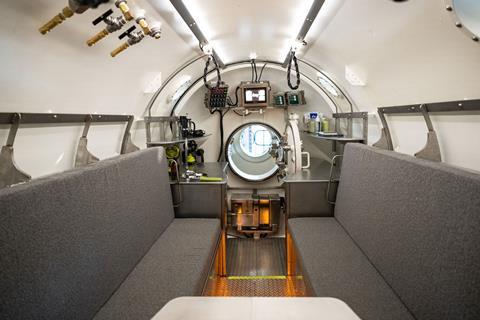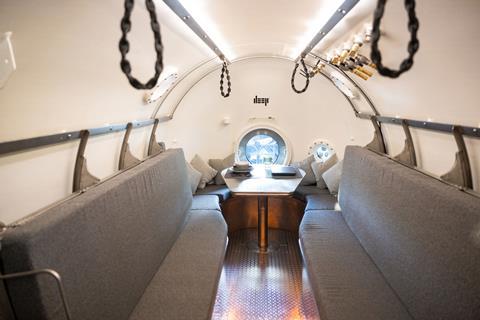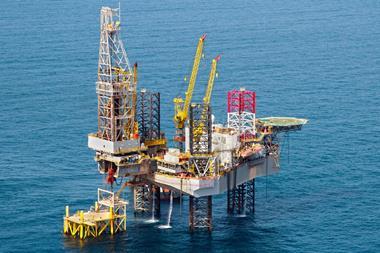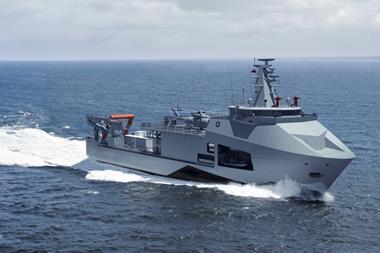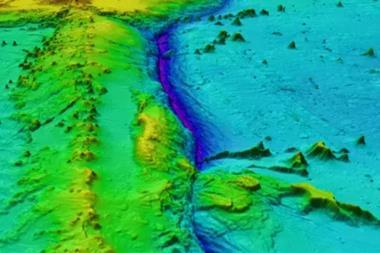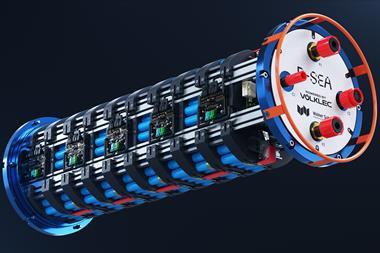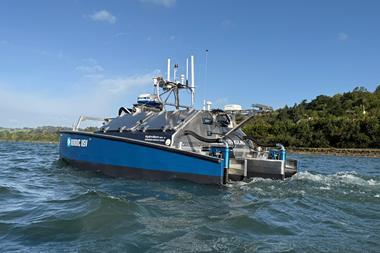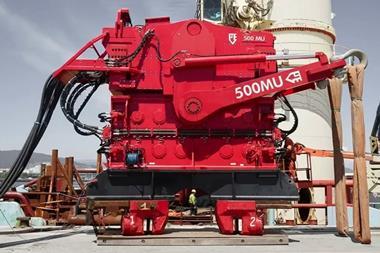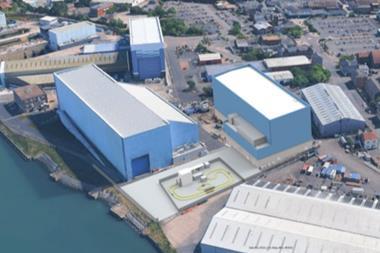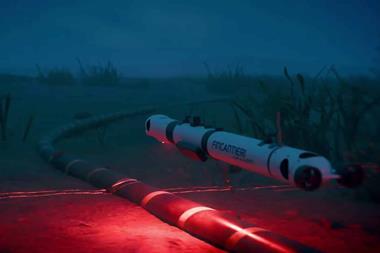DEEP®, an ocean engineering and technology company, is expanding its operations in the U.S. and is building its pilot subsea human habitat, Vanguard, in Florida.
The first subsea human habitat of its kind to be built in almost 40 years, Vanguard was unveiled last month in Miami, Florida.
The ocean is a vast, largely unexplored frontier that has fascinated humans for centuries. DEEP is changing this by pioneering a new era of underwater living. Its ambitious mission – to make humans aquatic – begins with Vanguard and represents a major step forward in how people can live and work beneath the waves.
Once operational, Vanguard will be the first underwater habitat to be classed by Det Norske Veritas (DNV), a leading authority in subsea standards, marking a milestone in safety.
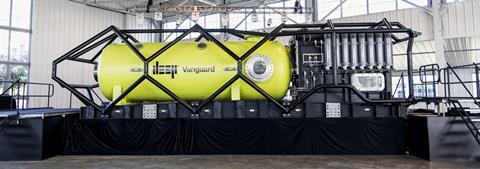
Vanguard at a glance
- 12.1 m (39.8 ft) long x 3.7 m (12.3 ft) wide (including exoskeleton, excluding base plate).
- 50 m operating depth.
- All steel construction.
- Surface support buoy provides air, water, waste removal, electricity and communications.
- 10-year deployment period.
What is Vanguard?
Vanguard is DEEP’s first subsea human habitat.
Designed for four crew, for medium-duration missions of seven or more days, it offers extended time for discovery and research under the ocean without the need to resurface. That extra time means more data and more potential for discoveries.
As well as serving a range of customers, Vanguard will allow DEEP to fine tune its designs and operations for future subsea habitat projects such as Sentinel, a modular habitat deployable up to 200 meters deep.
Vanguard is intended to support a wide range of use cases – from scientific research and environmental monitoring to future applications in astronaut training, advanced dive training, and offshore industry operations.
Vanguard’s design and operation
Vanguard will be operated at ambient pressure, where the pressure inside matches the pressure outside. This is like a diving bell saturation system, where the compartment a crew lives in is equal to the pressure at which they will dive. The key difference is Vanguard will be mounted to the seabed rather than needing to be repeatedly deployed and recovered from the water by a dive support vessel.
The design of the habitat is made up of three main parts: the living chamber, the dive center, and the foundation.
The living chamber is where crew will eat, sleep, work and perform various daily tasks when they aren’t out exploring the ocean. Inside is a comfortable multi-use space for working, relaxing and sleeping, as well as a galley kitchen to prepare meals. Bathroom facilities are available in a separate service area.
The living chamber connects to the dive center. This is where inhabitants will change in and out of dive gear, and exit and enter the habitat via a moon pool. This permanent opening to the ocean will allow people living on Vanguard to perform daily underwater missions.
The living chamber and dive center are attached to a foundation, which itself securely mounts to the ocean floor to protect the habitat from any incoming waves and storms.
|
|
|
On the water’s surface, directly above Vanguard, will be a support buoy. This structure is tethered to the habitat and provides various life support systems to the crew including breathing gases, power and communications. Crews will moor to the buoy to dive down to Vanguard and enter through its moon pool.
Four crew members will live aboard on rotating assignments, with operations coordinated from the shoreside Main Operating Base. Every system — from life support to power — will be monitored in real time, ensuring the habitat stays mission-ready.
|
|
|
Who is DEEP and who else is involved in this marine project?
DEEP is an ocean engineering and technology company on a mission to make humans aquatic, primarily through designing and deploying next generation subsea human habitats. By improving human access to the ocean, our knowledge of it can be accelerated, with far-reaching benefits.
DEEP’s expansion in the U.S. has involved bringing together a team of U.S.-based partners experienced in subsea design and engineering.
To help build Vanguard, DEEP has awarded a multimillion-dollar build contract to Triton Submarines, the Florida-based manufacturer of advanced submersibles. Triton has been contracted to provide critical engineering services for the project, bringing its expertise in pressure vessel design, certification, and underwater systems integration.
DEEP has also engaged Bastion Technologies, with its expertise in aerospace and subsea engineering, and Unique Group, a global leader in diving and marine services, to further strengthen the Vanguard project team with world-class technical capabilities.
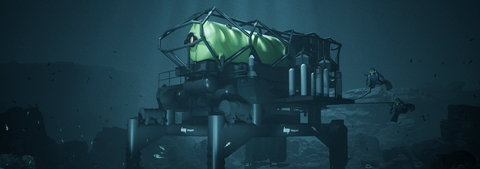
Technological innovation to make subsea habitation global
DEEP’s Vanguard project is the starting point in a new era of subsea habitation.
The pilot habitat will allow DEEP to test real-world functionality and refine the systems that will eventually support a global network of subsea human habitats.
From science to industry applications, from astronaut training to conservation, DEEP envisions a world where humans have permanent access to the ocean.
Learn more about DEEP
Follow @deepengineered on social media or visit deep.com


